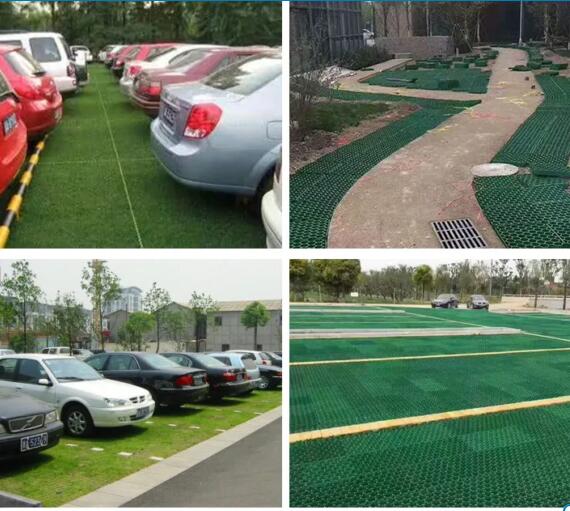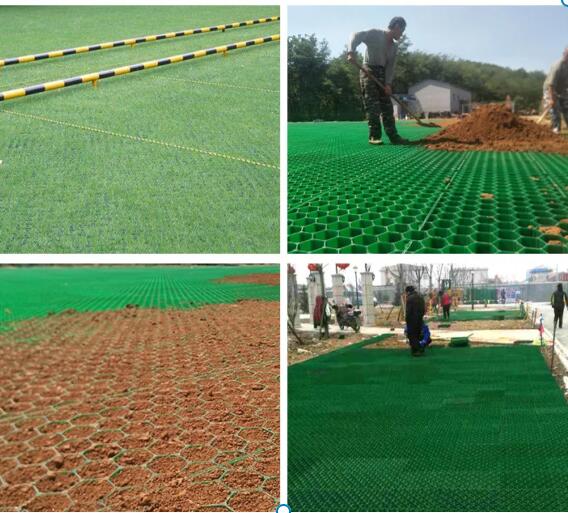Grass grids, also known as grass pavers or turf pavers, are systems that combine the strength and durability of traditional pavement with the aesthetic and environmental benefits of grass or vegetation. They are often used in various application scenarios to provide a stable surface for vehicles and pedestrians while allowing grass or other vegetation to grow through the grid openings. Here are some common grass grid application scenarios:
- Parking Areas: Grass grids are frequently used in parking lots and overflow parking areas. They provide a stable surface for vehicles while minimizing the heat island effect associated with traditional asphalt or concrete parking lots. Rainwater can also penetrate the grid, reducing stormwater runoff.
- Driveways: Homeowners and businesses often use grass grids for driveways. They offer a more visually appealing alternative to solid concrete or asphalt driveways and can help manage rainwater runoff.
- Pathways and Walkways: Grass grids can be used to create pedestrian pathways and walkways in parks, gardens, and recreational areas. They provide a natural, green walking surface while protecting the underlying soil from erosion.
- Fire Access Roads: In rural areas or locations prone to wildfires, grass grids can be used to create fire access roads. These roads offer stability for firefighting vehicles while allowing grass to grow, reducing soil erosion and improving the overall landscape.
- Erosion Control: Grass grids are effective erosion control measures on slopes and embankments. They stabilize the soil, prevent erosion, and support the growth of vegetation, making them valuable in landscaping and conservation efforts.


- Golf Course Cart Paths: Golf courses use grass grids for cart paths. These paths provide a firm surface for golf carts while blending in with the natural beauty of the course.
- Green Roofs: Some green roof systems incorporate grass grids to support vegetation growth while providing structural support and stability. Green roofs offer energy efficiency and stormwater management benefits.
- Recreational Areas: Grass grids are used in recreational areas like sports fields, playgrounds, and picnic areas to create stable surfaces for activities while preserving the grass cover.
- Campgrounds: Grass grids can be installed in campgrounds to create designated camping spots with a natural look and feel, all while preventing soil compaction and erosion.
- Residential Landscaping: Homeowners may use grass grids in their yards to create driveways, pathways, or parking areas that are visually appealing and environmentally friendly.
- Commercial and Industrial Areas: Grass grids can be used in commercial and industrial sites to create environmentally friendly parking and access solutions that comply with regulations for stormwater management.
- Event Spaces: Grass grids can be used to create temporary event spaces, such as for outdoor weddings or festivals, providing a stable surface for foot traffic and temporary structures.
- Bicycle Paths and Trails: In some cases, grass grids are used to create bicycle paths and trails, allowing cyclists to enjoy nature while reducing the environmental impact.
Grass grids offer versatility, sustainability, and aesthetic appeal in a wide range of applications. They are a sustainable alternative to traditional hardscaping materials, promoting better stormwater management and environmental preservation.
